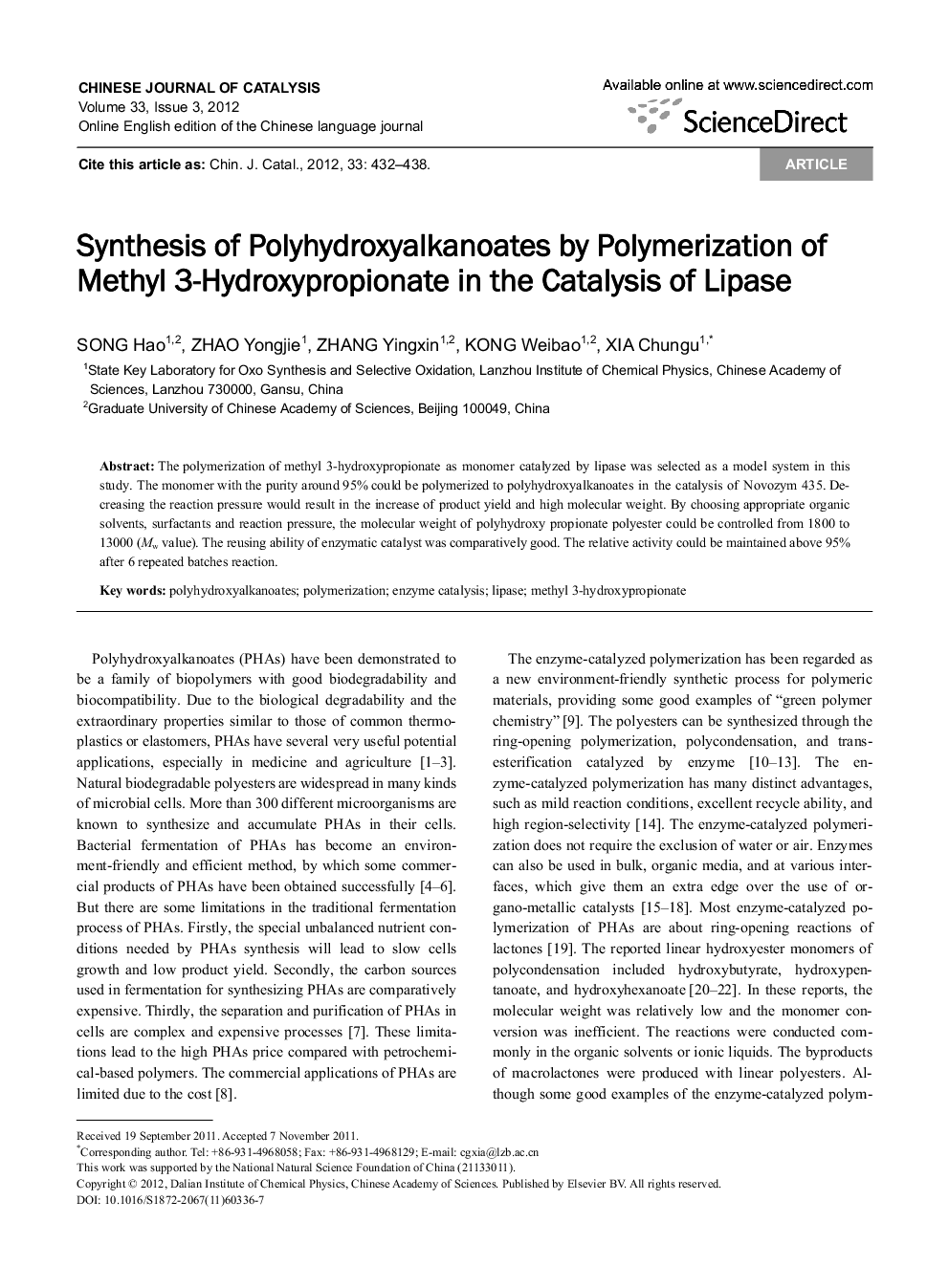| Article ID | Journal | Published Year | Pages | File Type |
|---|---|---|---|---|
| 60191 | Chinese Journal of Catalysis | 2012 | 7 Pages |
The polymerization of methyl 3-hydroxypropionate as monomer catalyzed by lipase was selected as a model system in this study. The monomer with the purity around 95% could be polymerized to polyhydroxyalkanoates in the catalysis of Novozym 435. Decreasing the reaction pressure would result in the increase of product yield and high molecular weight. By choosing appropriate organic solvents, surfactants and reaction pressure, the molecular weight of polyhydroxy propionate polyester could be controlled from 1800 to 13000 (Mw value). The reusing ability of enzymatic catalyst was comparatively good. The relative activity could be maintained above 95% after 6 repeated batches reaction.
摘要以 3-羟基丙酸甲酯为聚合单体, 建立了以固定化脂肪酶 Novozym 435 为催化剂的酶催化缩聚反应体系, 合成可完全降解的高分子聚酯聚羟基丙酸酯, 考察了反应条件和介质对反应性能的影响, 结果表明, 纯度大于 95% 的单体即可在温和条件下合成聚羟基羧酸酯; 降低反应压力可有效提升产物产率和分子量. 通过选择合适的有机溶剂介质和表面活性剂, 可使产物分子量提升至 13000 (Mw) 以上. 脂肪酶催化剂重复利用能力优异, 经 6 批次反应后, 其相对活性保持在 95% 以上.
Graphical abstractA convenient enzyme-catalyzed polymerization route for polyhydroxypropionate synthesis was established, by which the polyester could be obtained directly by enzyme-catalyzed polycondensation using inexpensive chemical monomers.Figure optionsDownload full-size imageDownload as PowerPoint slide
